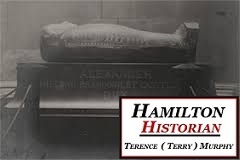Anne Hamilton, the 3rd Duchess of Hamilton was born on the 6th January c. 1631 and died on the 17th October c. 1716. She was responsible for rebuilding Hamilton Palace and contributing to the re-development of the town of Hamilton in Lanarkshire, Scotland.
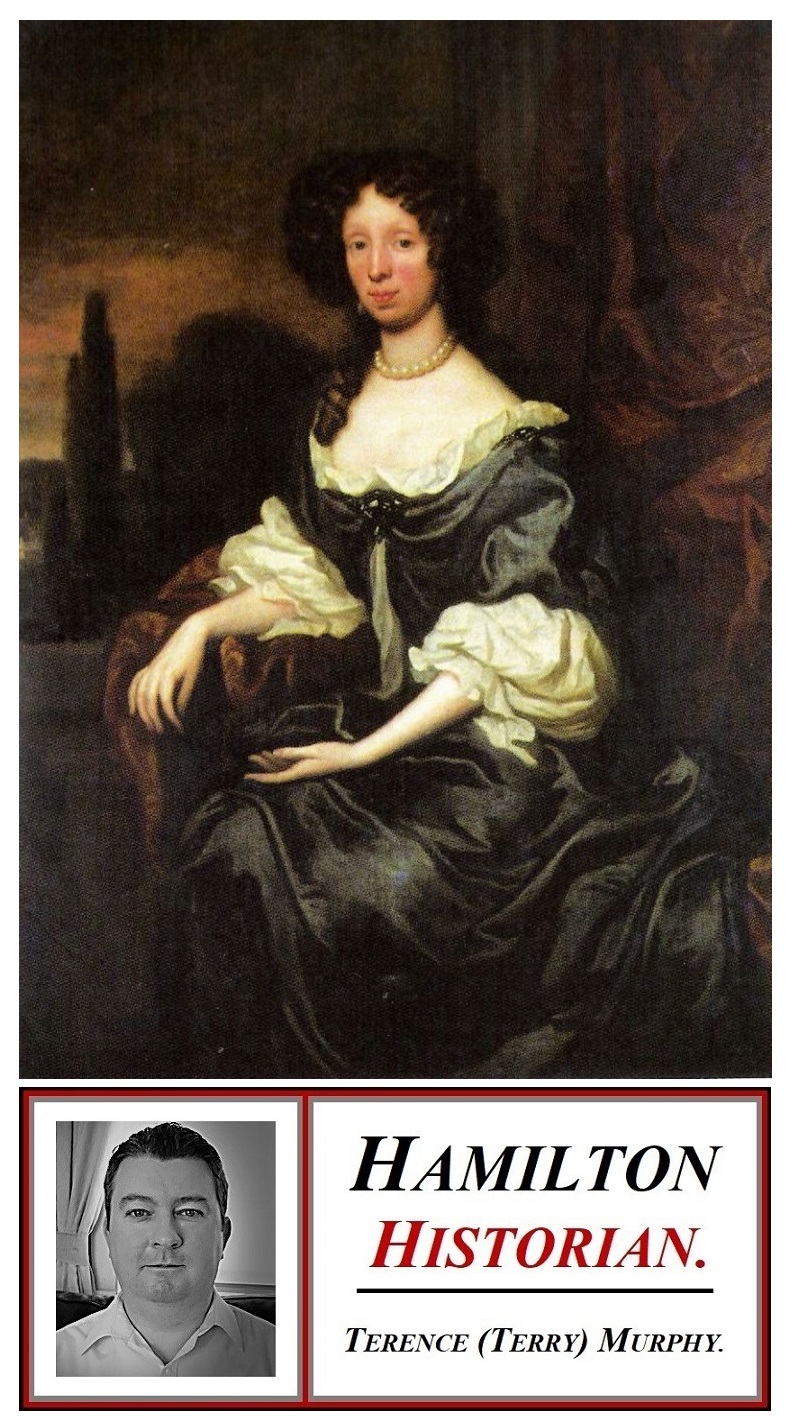
The Duchess was born at Whitehall Palace in London. She was the Daughter of the 1st Duke of Hamilton; Sir James Hamilton and his Wife; Lady Margaret (or Mary) Fielding. The Duke was one of King Charles I’s Advisors. Anne’s Mother Lady Margaret, who was Lady of the Bedchamber to Queen Henrietta-Maria and Queen-Consort of King Charles I died when Anne was only six years old! So, her Father sent her to Hamilton Palace to be raised by his Mother. During the Wars of Three Kingdoms, Anne had reached the age of 18 and it was around this time her father Sir James Hamilton (the 1st Duke of Hamilton) was executed c. 1649. His titles/estates were left to William, Earl of Lanark who was his younger brother.
William, Earl of Lanark ( 2nd Duke ) died during c. 1657 due to wounds he sustained at the Battle of Worcester. In his will he stated that his estates should be left to Anne Hamilton and that she should become the Duchess of Hamilton in her own right! She was also made Marchioness of Clydesdale, Countess of Arran, Lanark and Cambridge and The Lady Aven, Innerdale, Machanside and Polmont. By age 20 she was one of the most wealthy and powerful women in Scotland. She even had a distant claim to the throne of Scotland. Titles and property meant nothing during the early years of being a Duchess. Because many of the estates she inherited were confiscated due to debts that incurred from the war her Father and Uncle died in. Her male relative “The Earl of Abercorn” had also disputed her inheritance of the Hamilton Title around the same time.
Anne married William Douglas, 1st Earl of Selkirk (who was Catholic) at Corstorphine Kirk c. 1656. They successfully cleared her debts and reclaimed the estates and also managed to establish her rights to the title “3rd Duchess of Hamilton”. King Charles II made Anne’s Husband William Douglas “The Duke of Hamilton”, for Life. The Duke and Duchess had 13 children together. They also began developing Hamilton Palace which widely became recognised as the most largest private residence in the Western Hemisphere.
The 3rd Duke of Hamilton, William Douglas died in c. 1694. Duchess Anne continued to re-develop and improve Hamilton Palace and the Town of Hamilton. She had a New Grammar School, Hospital (Later “Alms House”), Woolen Factory and Spinning School built. In later years she became an opponent of the 1707 Act of Union. In c. 1716 she died aged 85 and was originally buried at Hamilton’s Old Collegiate Church (next to Hamilton Palace at the Low Parks). The reinterment of her remains is not documented! But I have my own theory about this, Please refer to my other history article titled: ” Hamilton’s Holy Grail: The Douglas-Hamilton Bloodline & Possible Graves Site.”. Anne Hamilton, 3rd Duchess of Hamilton will forever be remembered as; ” Good Duchess Anne “!
Written by
Hamilton Historian.
Terence (Terry) Murphy.
Ref. Anne Hamilton, Duchess of Hamilton]Wikipedia.

 The Mausoleum.
The Mausoleum.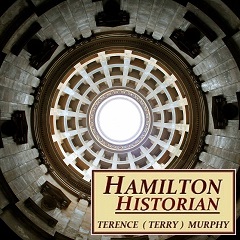 Ceiling Detail.
Ceiling Detail.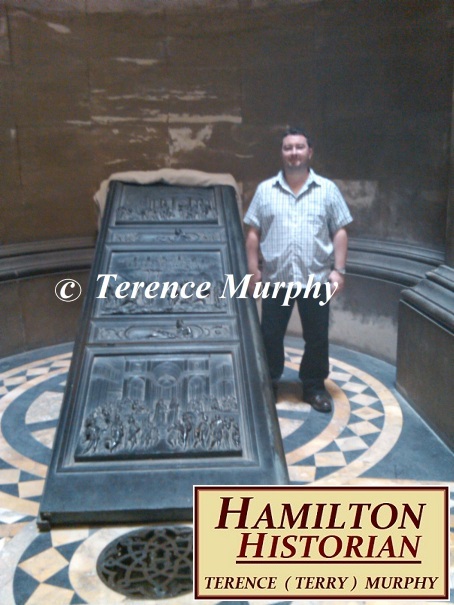
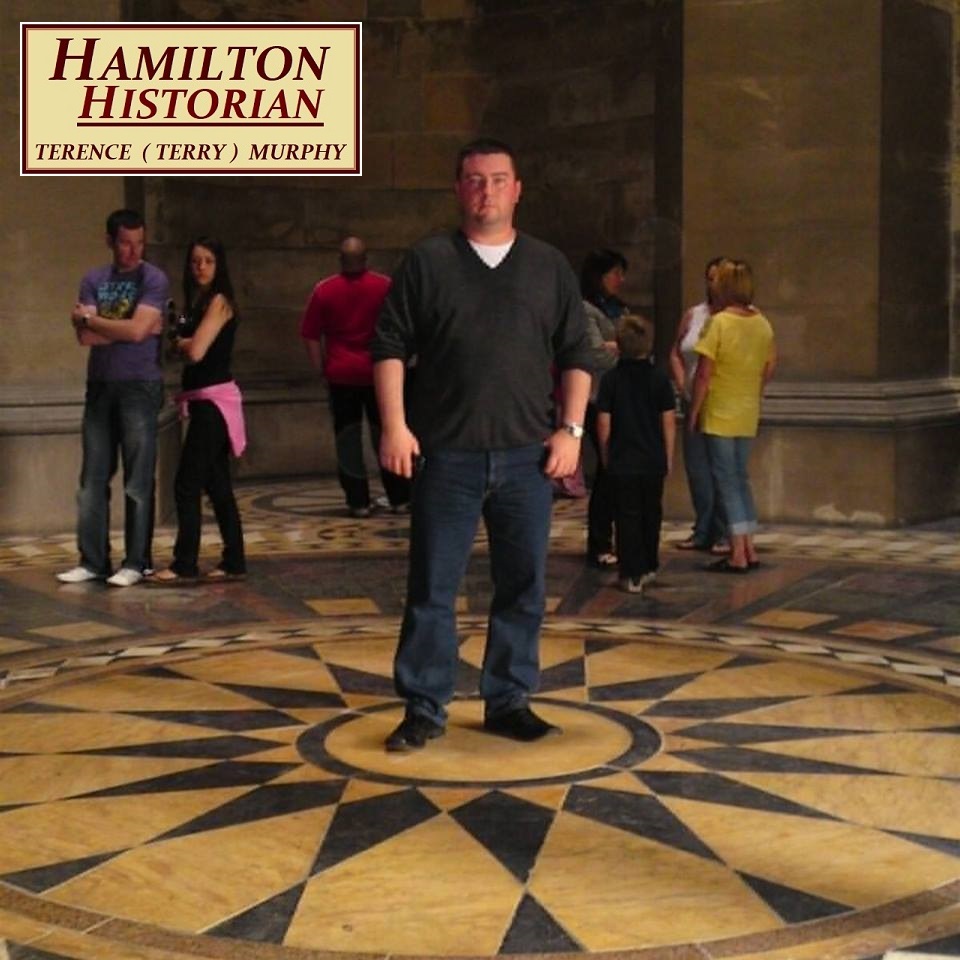 Hamilton Historian Terence (Terry) Murphy
Hamilton Historian Terence (Terry) Murphy 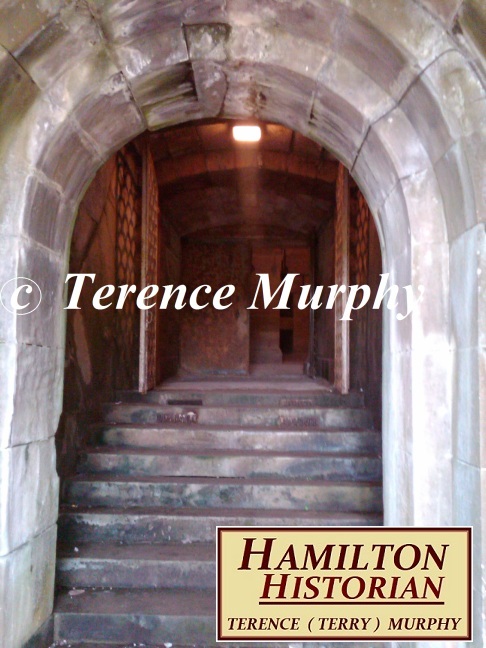 Entrance To The Crypt.
Entrance To The Crypt.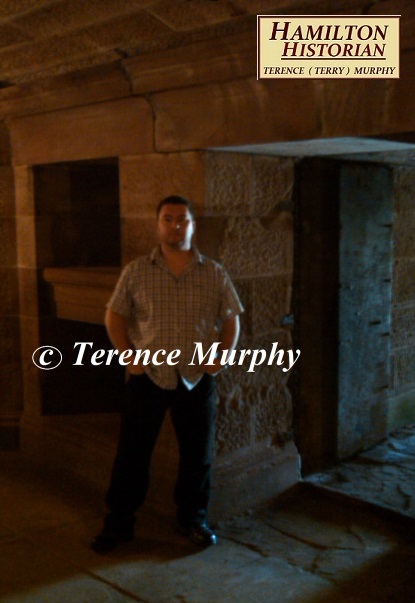
 Hamilton Historian Terence (Terry) Murphy With The Sleeping Lion.
Hamilton Historian Terence (Terry) Murphy With The Sleeping Lion.